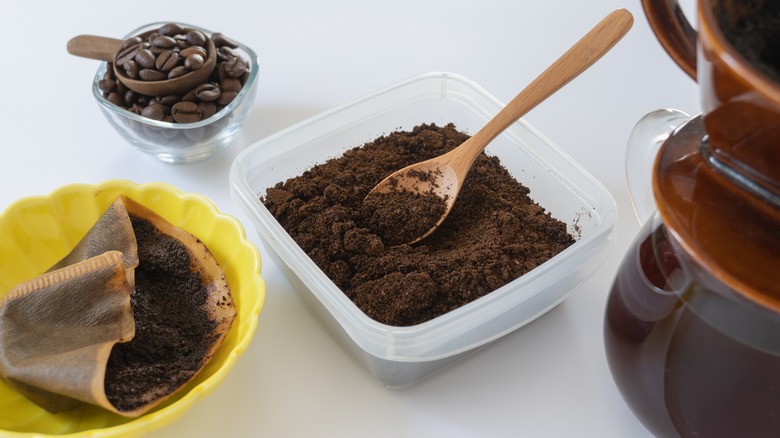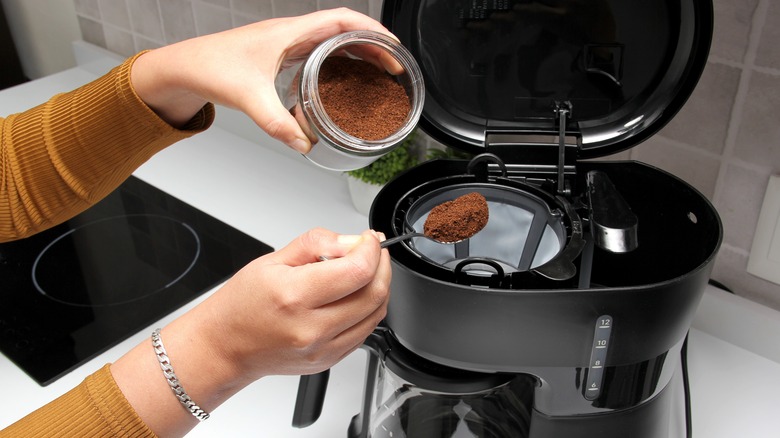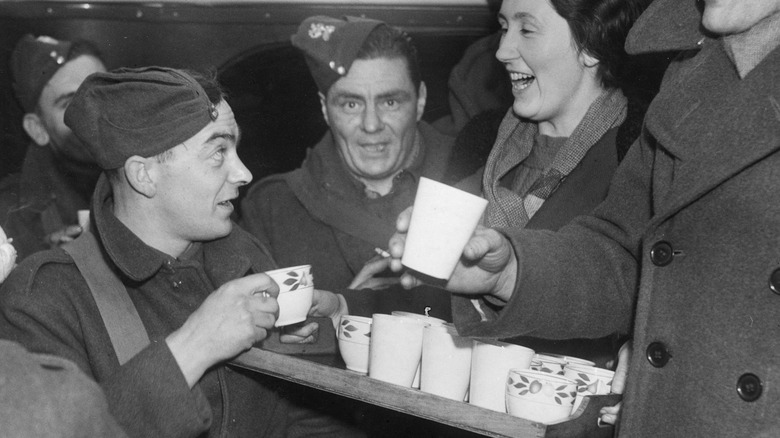Why It's A Terrible Idea To Reuse Coffee Grounds For A Second Cup
When you're on a budget, the idea is definitely tempting: you're out of coffee and instead of dumping the grounds from the coffeemaker and refilling it, you wonder if maybe you can re-brew them for a second pot. If you've ever tried it, then you know it's disappointing. The taste is extra-bitter in the worst kind of way, even if the coffee grounds themselves don't look any different.
The problem is that, put simply, brewing a pot of coffee sucks all the good stuff out of the crushed-up coffee beans. When you run that hot water through the coffee filter, you're doing chemistry by dissolving the grounds and extracting oils and flavor compounds that end up in your drink. Brewing a second pot means there are fewer of these compounds left to extract, which means less flavor and less caffeine in your second batch. This is true for both hot coffee and reused cold brew grounds. So whether you drink coffee for the taste or the boost, it's in your best interest to start fresh.
No double-dripping
Let's break that down some more. When you brew a pot of coffee — whether it's drip coffee or a French press — it usually takes around four minutes for the carafe to fill up. This is enough time to extract the ideal flavor from the grounds without making the cup too bland or too bitter. Coffee should taste bright, mellow, and slightly sweet because of the acids, oils, and sugars being pulled from the beans during this time.
If you over-brew, all that's left is the acids in the coffee beans, and this makes coffee taste uncomfortably bitter. Re-brewing with used grounds gives you the same problem. The result is similar to microwaving cold coffee, which similarly makes the taste more bitter. If you're the type who adds lots of cream and lots of sugar, then it may be harder to notice, but there's still less caffeine. Usually, it's not dangerous to reuse coffee grounds even if the taste takes a hit, but you shouldn't let your coffee grounds sit for longer than a day.
Roosevelt coffee
It's not a term you hear much nowadays, but coffee brewed with reused grounds used to be called "Roosevelt Coffee" during World War II. After the United States entered the war, they rationed coffee during 1942 and 1943 because shipments of beans were getting attacked before they could arrive (per the National Park Service). Because the rations were so strict — less than one cup per day — it became common to stretch coffee by "double dripping," which referred to pouring water over used coffee grounds. This meant coffee drinkers got a 30% higher yield, but as you can expect, the taste was poor.
Since Franklin Delano Roosevelt was president at the time, double-dripped coffee became not-so-lovingly nicknamed "Roosevelt Coffee" after the man in charge. Still, there were a few ways that folks got creative with their limited coffee. Magazines at the time recommended adding chicory to improve the taste, and other sweeteners (although chicory tastes more nutty) included barley or postum made from grains and molasses. Still, you shouldn't be making Roosevelt Coffee yourself unless it's an emergency.


